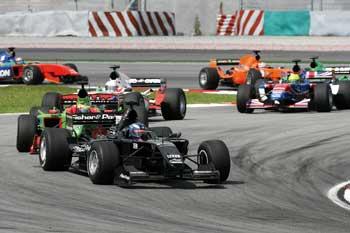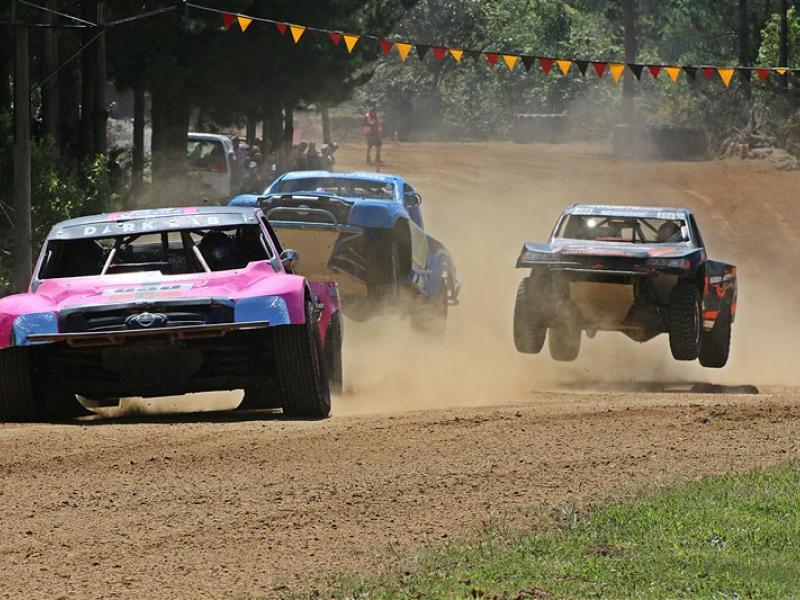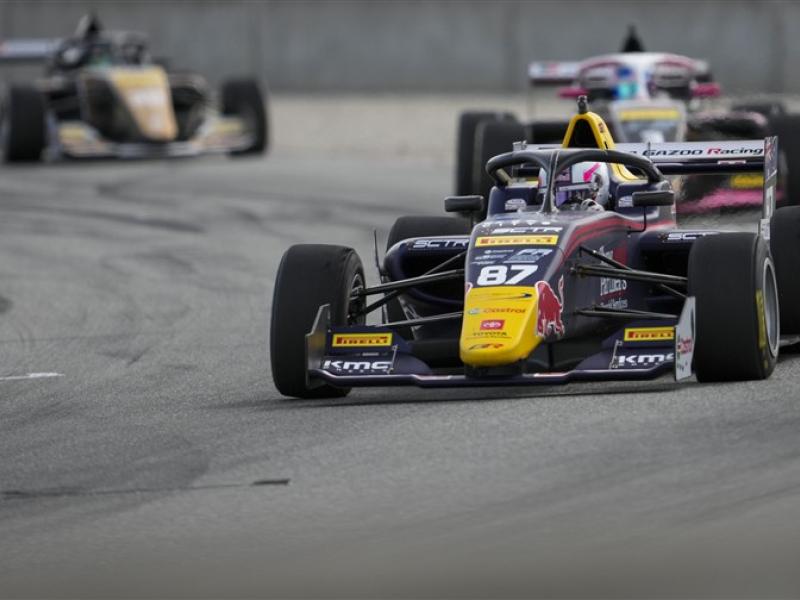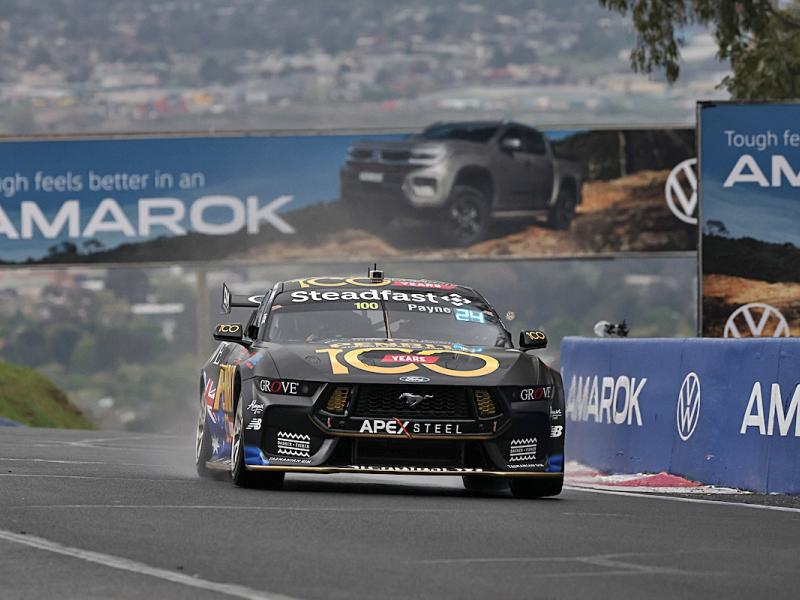It’s gone very quiet since A1GP cancelled the first three meetings of the 2009-10 season, and the answer is probably that it is finished. All of which is a great pity for New Zealand fans. A1GP had given us the chance to compete on the world stage and we did it very well – the New Zealand team finished fourth, second, second again and seventh in the four series that were run. And of course we had the three meetings at Taupo, giving fans the chance to see really fast, loud single-seaters in action as part of a world series. A1GP pitted nation against nation in identical machinery – success was down to the ability of the drivers and engineers, not to the amount of money the team owner could pump in. Cars raced in their national colours, and New Zealand’s car was christened Black Beauty. Some leading drivers joined the series, including a few with F1 experience, and others – such as New Zealand’s Jonny Reid – showed that they were fast even though they did not have a high international profile. Sheikh Maktoum Hasher Maktoum Al Maktoum of Dubai launched A1GP, although later it appeared that he might have been more of a figurehead. South African businessman Tony Teixeira, who made a fortune in oil, gold and diamonds, seemed to be the power behind the throne and later he took over as chief of the operation. The cars had Lola chassis and V8 engines made by Zytek. The first series ran in the southern summer of 2005-06 – part of the idea was to stage a high-level series during the Formula One off-season. Auckland car magnate Colin Giltrap bought the NZ franchise and engaged West Surrey Racing – run by expat Kiwis Dick Bennetts and Mike Ewan – to engineer the car. Most national teams chose to ally themselves with professional race outfits, who were glad of the work in the European off-season, rather than try to put an engineering crew together themselves. Reid and Matt Halliday shared the driving, with some success as they finished seventh overall. The series took in 11 rounds, with 25 teams entered, and each meeting included a sprint race and a longer feature race. France, with drivers Alexandre Premat and Nicolas Lapierre, won from Switzerland and Great Britain. Teixeira announced a first-season loss of $US212 million – about twice what he had expected. In September 2006 the Sheikh announced that he was selling his shares in the company and resigning as chairman. For the second season New Zealand switched to Super Nova, headed by former racer David Sears. The team said it had been very pleased with West Surrey Racing, but wanted a tie-up with Super Nova because that company was successful in GP2, the category immediately below F1. One of Giltrap’s main aims in setting up the team was to help a young Kiwi make it through into F1, and he thought the GP2 connection could be helpful in that respect. Reid did most of the driving this season and he scored New Zealand’s first big success as he won both races at the Indonesian round. He also won the Chinese round in Shanghai overall, after finishing second in the sprint race and taking victory in the feature. New Zealand finished second in the championship, 35 points behind Germany. The main driver for the German team was Nico Hulkenberg and he enters Formula One this year with the Williams team. Great Britain was third and altogether eight different nations won races during the season. Meanwhile the Taupo circuit had been extended and upgraded, with the best facilities of any circuit in New Zealand. Giltrap organised a round for the series in New Zealand, bringing top-level single-seater racing to this country for the first time in many years. The meeting went off well with nearly 30,000 people at the track – though some attended with free tickets thanks to giveaways to make sure the circuit looked full of spectators. Reid came third in both races, with Germany’s Hulkenberg and France’s Loic Duval first and second respectively both times. For the third season New Zealand elected to keep Reid in the car rather than switching between different drivers, while the rookie sessions were used to give Earl Bamber, Brendon Hartley and Chris van der Drift experience with the car. Now New Zealand was a real championship contender and led the series at times before Switzerland took the title. Reid scored the double at the Czech circuit of Brno then got the local fans going by winning the sprint race at Taupo, although Germany then took the feature with New Zealand fourth. Reid scored another sprint-race win in Mexico but in the end we finished 41 points behind the more consistent Switzerland, whose main driver was Neel Jani. Great Britain were again third, just one point behind New Zealand. At the time of writing there had been no official announcement that A1GP – the World Cup of Motorsport – was dead, but everyone is assuming that that is the case and the website seems to have been shut down. The organisation is in debt and key personnel have left. |
For the fourth season A1GP introduced new cars – powered by Ferrari. The tie-up with Formula One’s most glamorous team was intended to give the series more status and credibility. The chassis was based on an earlier Ferrari F1 design, and the 4.5 litre V8 was a modified version of a Ferrari production motor and therefore a bit heavier than a pure racing engine might have been. But production of the cars ran late, the first round had to be cancelled, and not all nations had their cars when the series finally got under way at Zandvoort in the Netherlands. New Zealand decided to switch to younger drivers and signed up Bamber and Van der Drift, although Reid was still officially part of the squad. Bamber had been able to take part in the pre-season test so he was selected to race at Zandvoort and the rookie produced an outstanding performance, on the podium in both races in extremely difficult wet conditions. With other cancellations, the series ended up with only seven rounds and Bamber drove at five of those. Van der Drift, who had been based in Europe for a few years, raced at Taupo in January 2009 as Bamber had a commitment in the GP2 Asia series. Van der Drift came fifth in the sprint race but at the start of the feature race he was hit by a glitch in the engine’s software, which had also affected some other teams. The launch control is supposed to allow the driver to keep the engine at peak revs on the start line and just dump the clutch when the red light goes out, but sometimes it cut power and slowed the car down. Black Beauty limped away from the starting grid and dropped to 18th, ending any chance of a good result. The team scored no victories during the season and dropped to seventh. By now it was apparent that A1GP was in real financial strife. Its main operating company, a subsidiary of the main company, was put into liquidation in Britain. The transport company that had taken the cars around the world impounded them because it was owed money, and there were persistent rumours that Ferrari was owed money too. MEN understands that A1GP still owes money in New Zealand from the last Taupo race. The first meeting of the 2009-10 season was supposed to be at Surfers Paradise, A1GP taking over from the Indycars that used to race there. Less than a week before the event, A1GP said it couldn’t make it. New Zealand was not on the schedule for this season – a decision had been made to shift the meeting from Taupo to the new Hampton Downs track, but that would not have been ready in time so New Zealand dropped off the calendar. A little later A1GP cancelled the next two meetings as well. Former NZ team manager Bob McMurray says the concept of A1GP was great, but the management and marketing were not. "I remember at the very first race there seemed to be hundreds of people wandering round with white A1GP shirts and black trousers, and you wondered what the hell they were all doing," he said. The switch to the new cars for season four was unnecessarily expensive, McMurray reckons. "That cost millions and millions of dollars, when they could have kept running the Lola-Zytek cars for another couple of seasons," he said. The New Zealand team saw the crisis coming and prepared alternative plans, which will probably involve entering one or two all-black Porsche GT3s in the 2010 Mobil 1 Supercup series - a support category at many of the Formula One meetings. Halliday won the rookies section of the 2009 series. For the current domestic season the Giltrap group is fielding Halliday and Reid in the Battery Town Porsche GT3 Challenge Cup, with sponsorship from Fisher & Paykel – who had been the main sponsors of the A1GP team.
|






